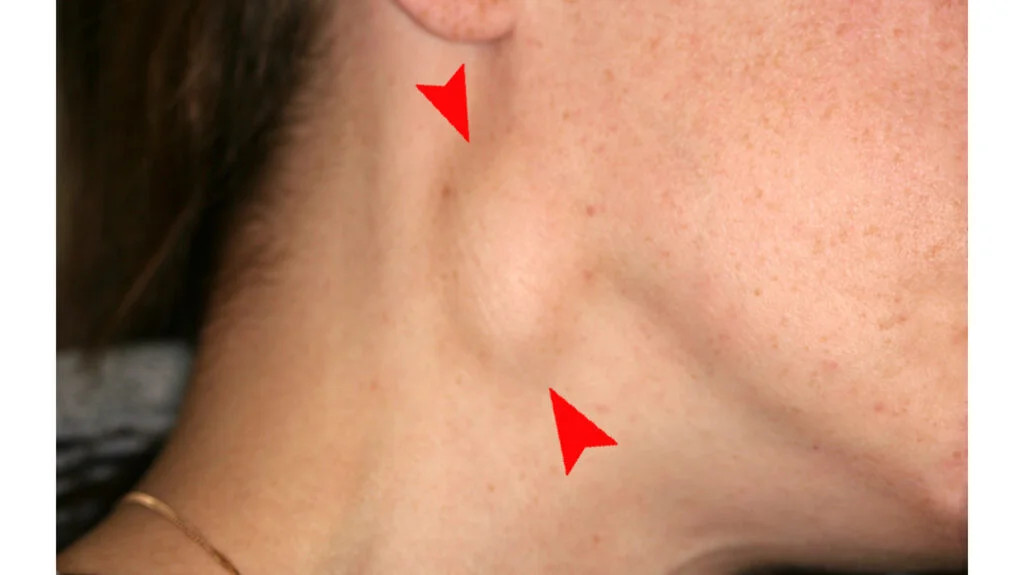Definisi
Reaksi anafilaktik adalah reaksi alergi yang berat dan berpotensi mengancam nyawa. Gejala alergi biasanya tidak mengancam nyawa, namun reaksi alergi berat dapat menyebabkan anafilaksis. Bahkan jika Anda atau anak Anda pernah mengalami reaksi anafilaktik ringan di masa lalu, terdapat risiko untuk mengalami anafilaksis yang lebih berat setelah paparan ulang terhadap zat yang menyebabkan alergi.
Penyebab
Sistem imun memproduksi antibodi yang melindungi tubuh dari zat asing. Hal ini baik ketika zat asing tersebut berbahaya, seperti beberapa bakteri atau virus. Namun, beberapa orang memiliki sistem imun yang bereaksi berlebihan terhadap zat yang normalnya tidak menyebabkan reaksi alergi.
Pencetus anafilaksis pada anak yang paling banyak adalah alergi makanan, seperti terhadap kacang, ikan, kerang, gandum, kedelai, wijen, dan susu. Selain alergi terhadap kacang, ikan, wijen, kerang, pencetus anafilaksis pada orang dewasa meliputi:
- Obat-obatan tertentu, seperti antibiotik, aspirin, dan pereda nyeri lainnya yang dijual bebas, dan kontras yang digunakan untuk pemeriksaan radiologi
- Sengatan lebah, tawon, dan semut merah
- Lateks
Meskipun jarang, beberapa orang mengalami reaksi anafilaktik akibat olahraga aerobik, seperti jogging, atau bahkan aktivitas fisik yang tidak intens, seperti berjalan. Makan makanan tertentu sebelum olahraga atau olahraga saat cuaca panas, dingin, atau lembap juga telah dikaitkan dengan anafilaksis pada beberapa orang. Bicarakan pada dokter Anda mengenai hal yang harus diperhatikan ketika berolahraga.
Jika Anda tidak mengetahui pencetus serangan alergi, beberapa tes dapat membantu mengidentifikasi alergen. Pada beberapa kasus, penyebab anafilaksis tidak dapat diidentifikasi (anafilaksis idiopatik).
Faktor Risiko
Tidak terdapat banyak faktor risiko yang diketahui untuk anafilaksis, namun beberapa hal yang dapat meningkatkan risiko meliputi:
- Riwayat anafilaksis sebelumnya. Jika Anda pernah mengalami reaksi anafilaksis satu kali, risiko Anda untuk mengalami reaksi serius ini meningkat. Reaksi selanjutnya dapat lebih berat dari reaksi pertama
- Alergi atau asma. Orang yang memiliki salah satu kondisi tersebut memiliki risiko lebih tinggi mengalami anafilaksis
- Kondisi tertentu lainnya. Hal ini meliputi penyakit jantung dan penumpukan jenis sel darah putih tertentu (mastositosis)
Gejala
Gejala reaksi anafilaktik biasanya muncul dalam beberapa menit setelah paparan terhadap suatu alergen. Namun, terkadang reaksi anafilaktik dapat terjadi dalam setengah jam atau lebih setelah paparan. Pada kasus yang jarang, rekasi dapat tertunda sampai beberapa jam.
Tanda dan gejalanya meliputi:
- Reaksi kulit, termasuk biduran dan gatal, serta kulit yang merah atau pucat
- Tekanan darah rendah (hipotensi)
- Penyempitan saluran napas dan pembengkakan lidah atau tenggorokan, yang dapat menyebabkan mengi dan kesulitan bernapas
- Detak jantung yang lemah dan cepat
- Mual, muntah, atau diare
- Pusing atau pingsan
Jika Anda ingin mengetahui selengkapnya mengenai hipotensi, Anda dapat membacanya di sini: Hipotensi - Definisi, Penyebab, Gejala, dan Pengobatannya
Diagnosis
Dokter dapat menanyakan mengenai reaksi alergi sebelumnya, termasuk riwayat alergi terhadap:
- Makanan tertentu
- Obat-obatan
- Lateks
- Sengatan serangga
Untuk membantu mengkonfirmasi diagnosis:
- Anda akan menjalani pemeriksaan darah untuk mengukur jumlah enzim tertentu (triptase) yang dapat meningkat sampai 3 jam setelah anafilaksis
- Anda mungkin akan diperiksa untuk alergi dengan tes kulit atau tes darah untuk membantu menentukan pencetus Anda
Banyak kondisi yang memiliki tanda dan gejala yang mirip dengan anafilaksis. Dokter akan menyingkirkan kondisi lainnya.
Tata Laksana
Saat reaksi anafilaktik, Anda mungkin menerima resusitasi jantung paru jika Anda berhenti bernapas atau jantung Anda berhenti berdetak. Anda juga dapat diberikan obat, yang meliputi:
- Epinefrin (adrenalin) untuk menurunkan respon alergi tubuh
- Oksigen, untuk membantu Anda bernapas
- Suntikan antihistamin dan kortikosteroid untuk menurunkan peradangan saluran napas dan memperbaiki pernapasan
- Agonis beta (seperti albuterol) untuk memperbaiki gejala pernapasan
Banyak orang dengan risiko anafilaksis membawa autoinjector. Alat ini terdiri dari semprit dan jarum yang mengandung satu dosis obat ketika disuntikan ke paha. Menggunakan autoinjector segera dapat mencegah perburukan anafilaksis dan dapat menyelamatkan nyawa Anda.
Jika sengatan serangga yang memicu reaksi anafilaktik, serial suntikan alergi (imunoterapi) dapat menurunkan respon alergi tubuh dan mencegah reaksi berat di kemudian hari. Sayangnya, pada kebanyakan kasus lainnya tidak ada acara untuk menangani kondisi sistem imun yang menyebabkan anafilaksis.
Komplikasi
Tanpa terapi segera, anafilaksis dapat menyebabkan:
- Tersumbatnya saluran napas
- Henti jantung (tidak ada detak jantung efektif)
- Henti napas (tidak bernapas)
- Syok
Baca Juga: Henti Jantung Paru - Definisi, Penyebab, Gejala, dan Pengobatannya
Pencegahan
Cara terbaik untuk mencegah anafilaksis yaitu dengan menghindari zat yang menyebabkan reaksi berat ini. Selain itu, beberapa hal yang dapat dilakukan, antara lain:
- Menggunakan kalung atau gelang penanda medis untuk mengindikasikan bahwa Anda memiliki alergi terhadap obat spesifik atau zat lainnya
- Pastikan kit darurat dengan obat resep tersedia sepanjang waktu. Dokter dapat memberi saran mengenai isi kit tersebut. Jika Anda memiliki autoinjector epinefrin, cek tanggal kadaluwarsanya dan pastikan untuk menggantinya sebelum kadaluwarsa. Pastikan Anda mengetahui cara memakainya. Selain itu, pastikan juga orang yang terdekat dengan Anda mengetahui cara pemakaiannya
- Beritahu dokter Anda mengenai reaksi terhadap obat yang pernah Anda alami
- Jika Anda alergi terhadap serangga yang menyengat, berhati-hatilah jika berada di dekatnya. Gunakan pakaian lengan panjang dan celana panjang, jangan berjalan di rumput tanpa alas kaki, jangan menggunakan parfum atau pelembap berparfum. Tetap tenang ketika berada di dekat serangga yang menyengat. Jauhi dengan perlahan dan jangan menghentak serangga
- Jika Anda memiliki alergi makanan, bacalah label dari semua makanan yang Anda beli dan makan dengan berhati-hati. Proses manufaktur dapat berubah, sehingga penting untuk mengecek ulang label makanan yang sering Anda makan secara berkala
Kapan Harus ke Dokter?
Segera cari pertolongan medis jika Anda, anak Anda, atau orang lain yang sedang Bersama Anda mengalami reaksi alergi berat. Jangan menunggu untuk melihat apakah gejala akan membaik.
Jika Anda mengalami serangan reaksi anafilaktik dan Anda membawa autoinjector epinefrin, segera aplikasikan. Bahkan jika gejala membaik setelah penyuntikan, Anda tetap harus pergi ke instalasi gawat darurat untuk memastikan gejala Anda tidak kambuh, bahkan tanpa paparan berkelanjutan terhadap alergen. Reaksi kedua ini disebut dengan anafilaksis bifasik.
Jika Anda menemukan orang lain mengalami tanda dan gejala kulit yang pucat, dingin, dan lembap, nadi yang lemah dan cepat, kesulitan bernapas, bingung, atau tidak sadarkan diri. Segera lakukan hal dibawah ini:
- Telepon nomor emergensi
- Gunakan autoinjector epinefrin jika ada dengan menyuntikannya ke paha orang tersebut
- Pastikan orang tersebut berbaring dengan kaki yang lebih tinggi daripada jantung dan kepala
- Periksa nadi dan pernapasannya, dan jika perlu lakukan resusitasi jantung atau pertolongan pertama lainnya. Jika Anda tidak mengetahui cara melakukannya, tunggulah sampai bantuan datang
Diagnosis dan manajemen jangka panjang anafilaksis dapat kompleks, sehingga Anda kemungkinan perlu menemui dokter spesialis alergi dan imunologi.
Mau tahu informasi seputar penyakit lainnya? Cek di sini, ya!
- dr. Monica Salim
Anaphylaxis (2021) Mayo Clinic. Mayo Foundation for Medical Education and Research. Available at: https://www.mayoclinic.org/diseases-conditions/anaphylaxis/symptoms-causes/syc-20351468 (Accessed: March 14, 2023).
Anaphylaxis: Medlineplus medical encyclopedia (2022) MedlinePlus. U.S. National Library of Medicine. Available at: https://medlineplus.gov/ency/article/000844.htm (Accessed: March 14, 2023).
Anaphylaxis: Causes, symptoms & treatment (2018) ACAAI Public Website. Available at: https://acaai.org/allergies/symptoms/anaphylaxis/ (Accessed: March 14, 2023).




/63020124d5d37.jpg)





